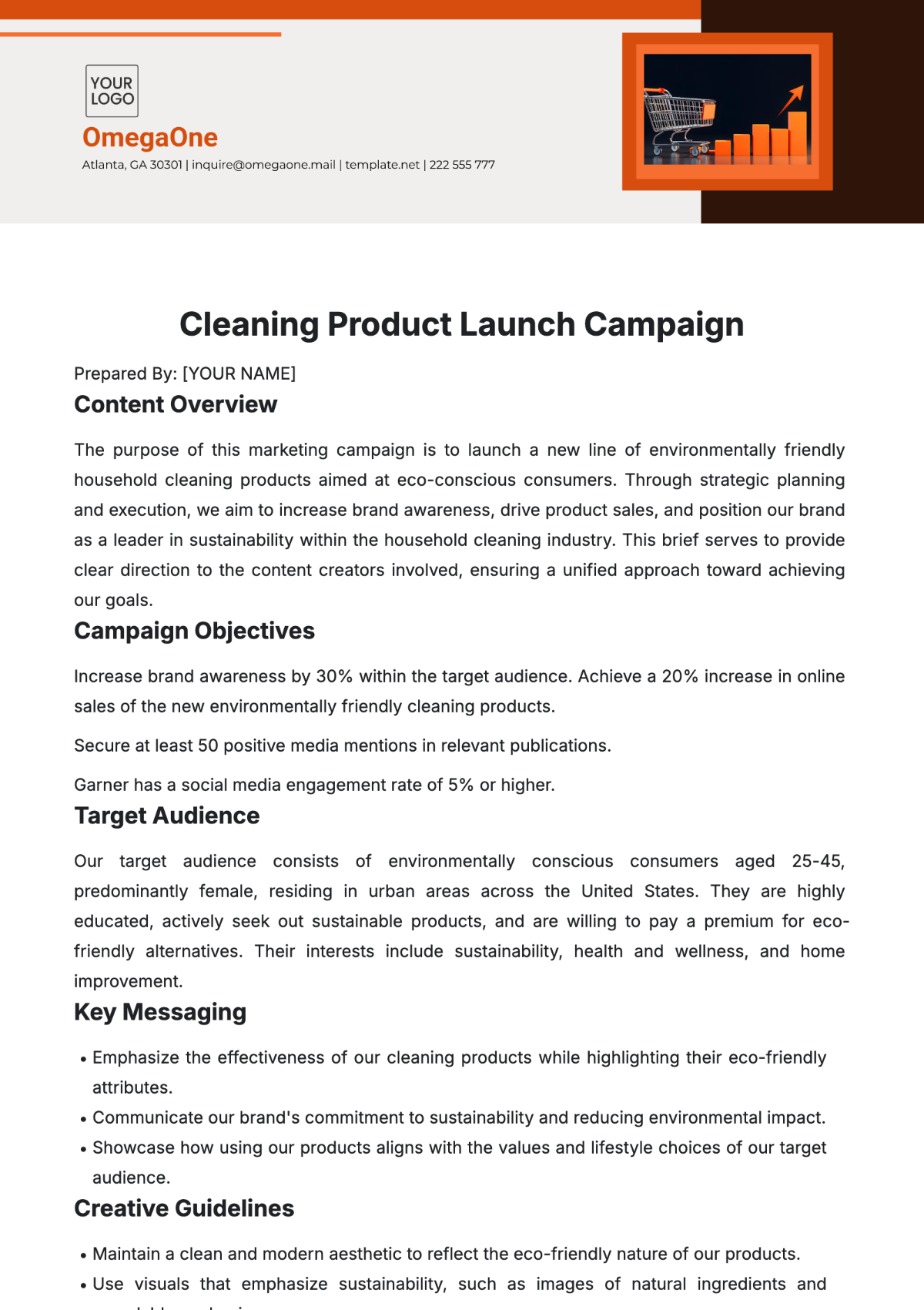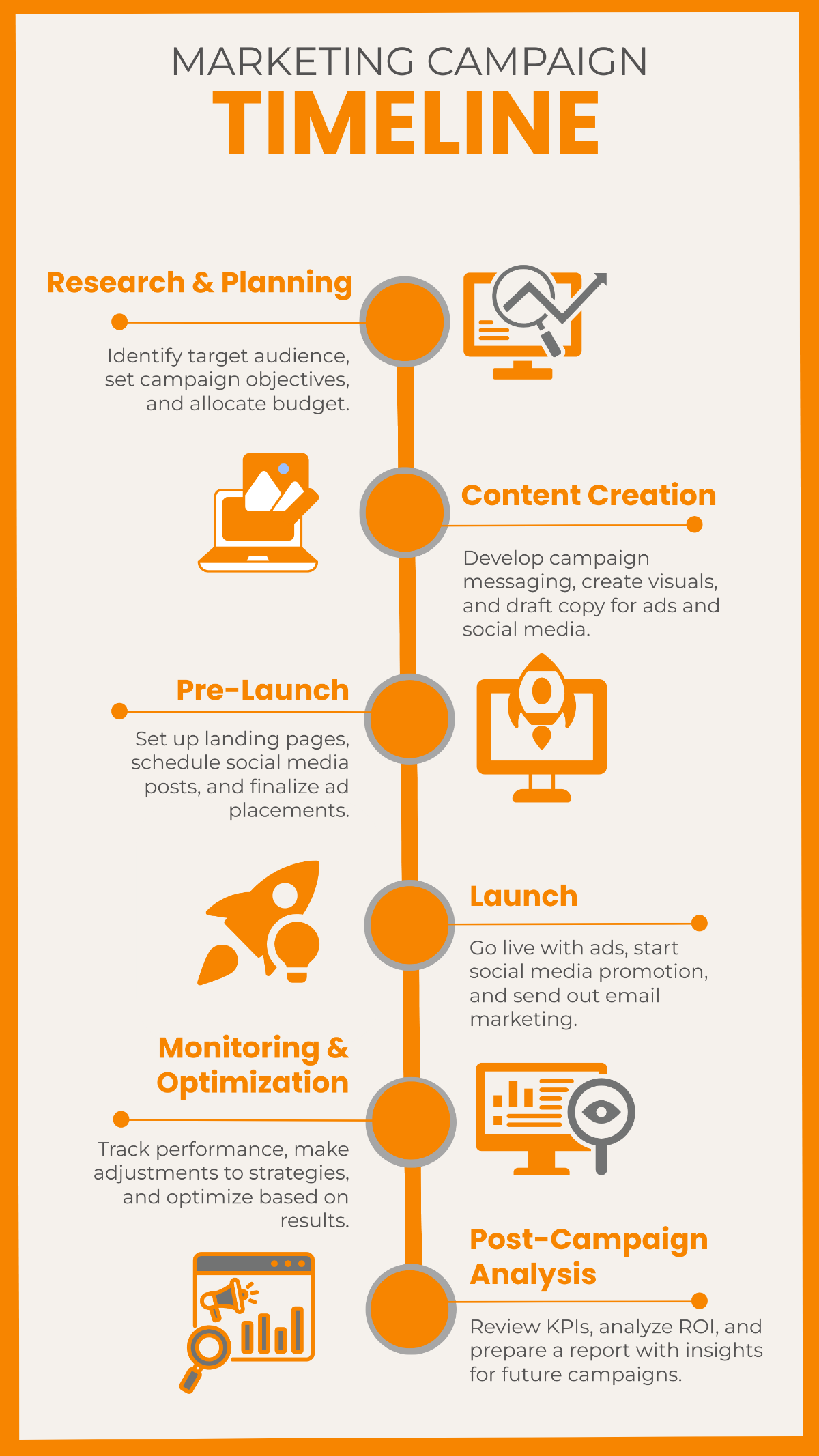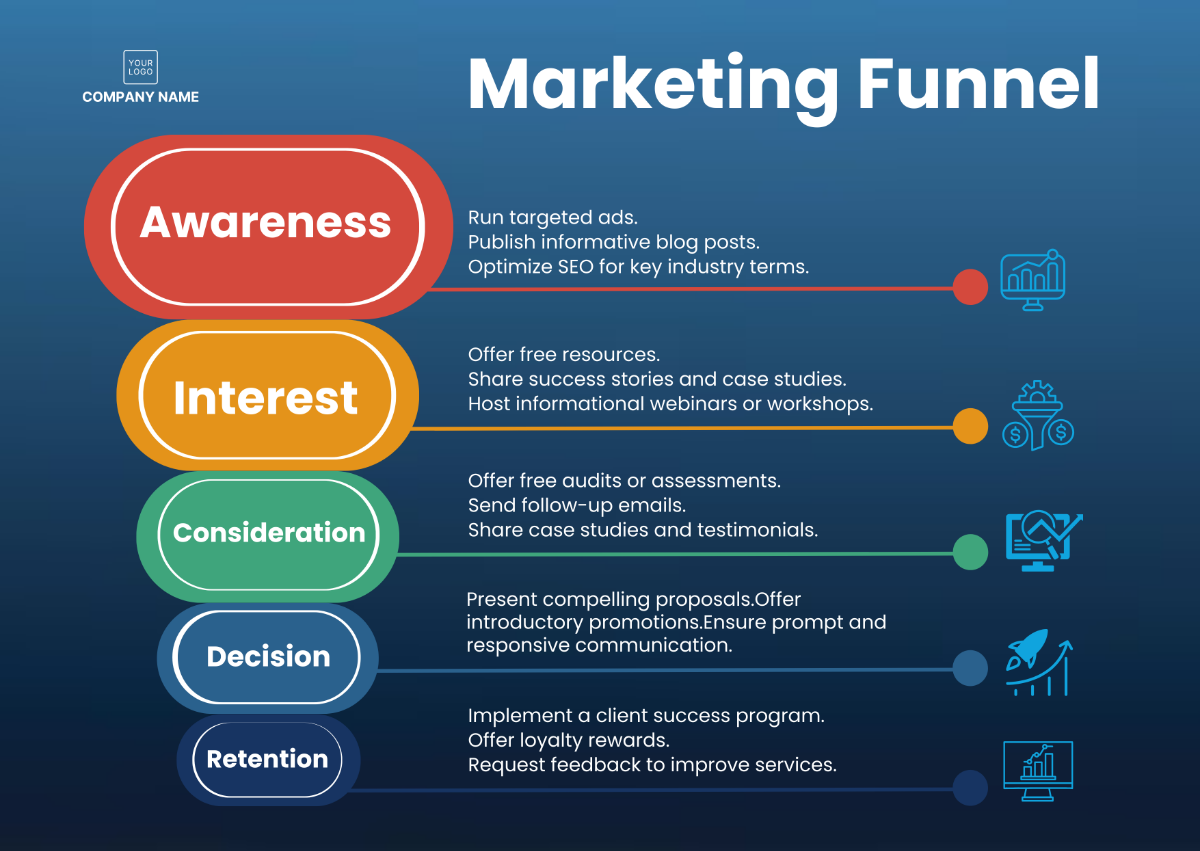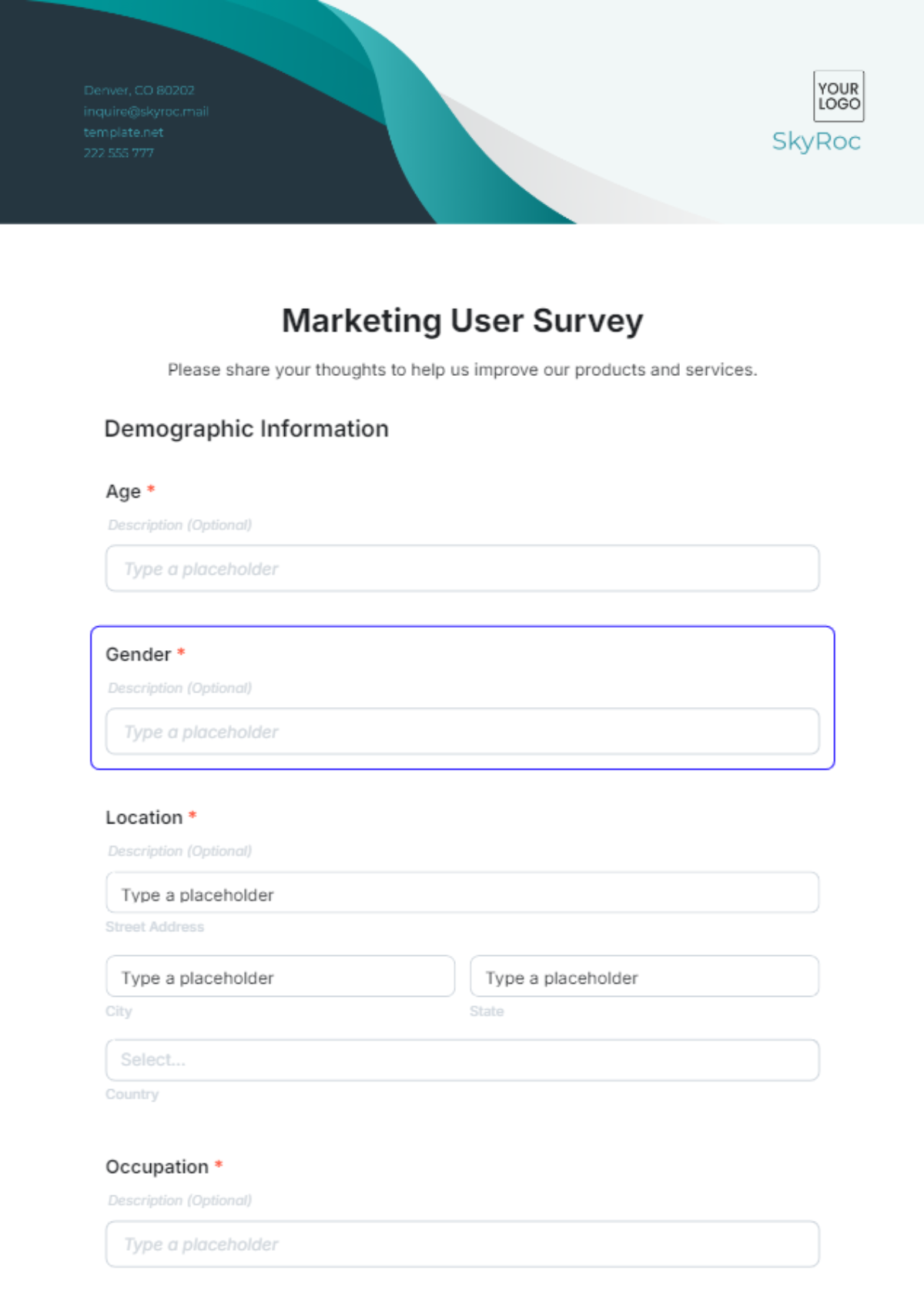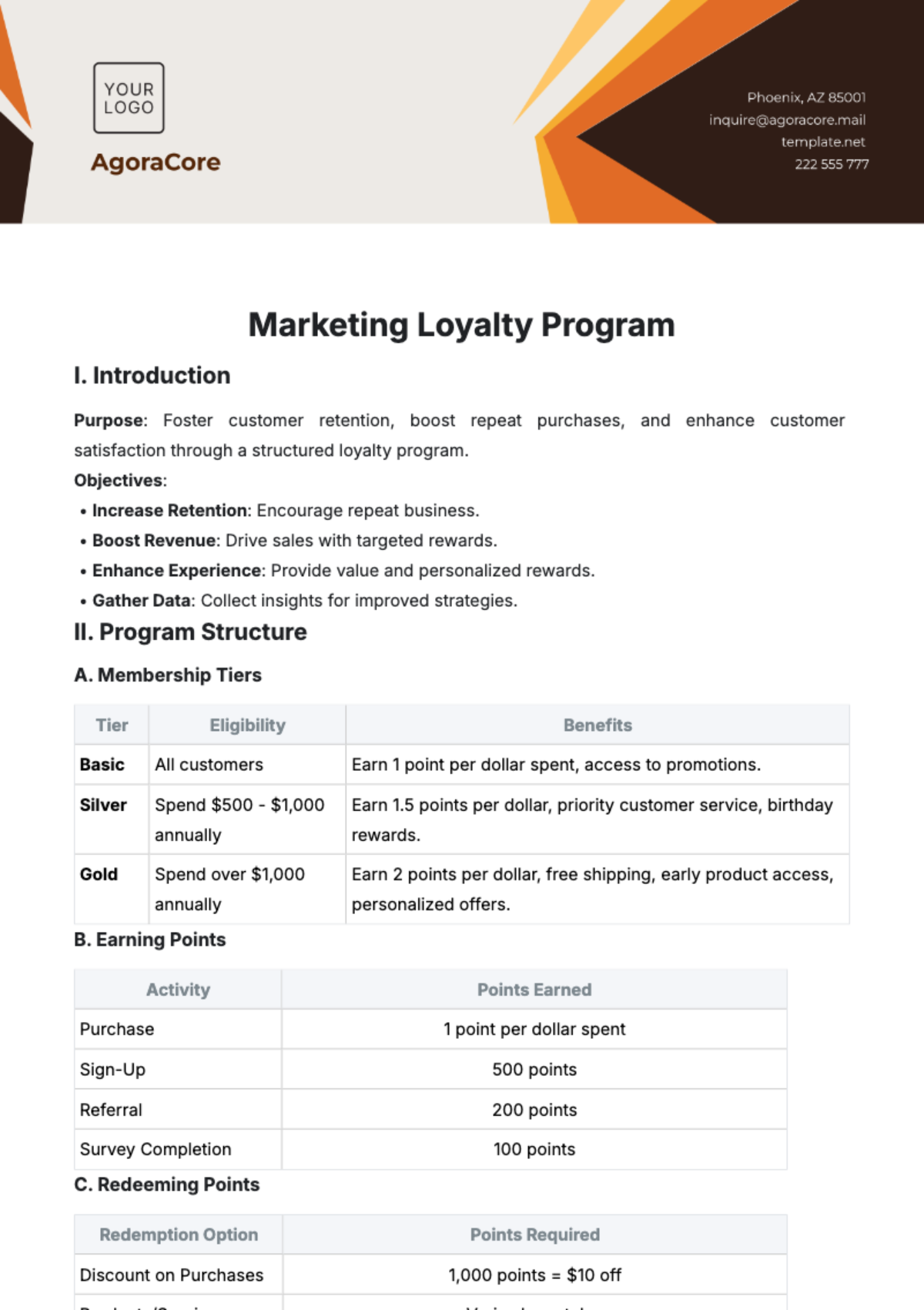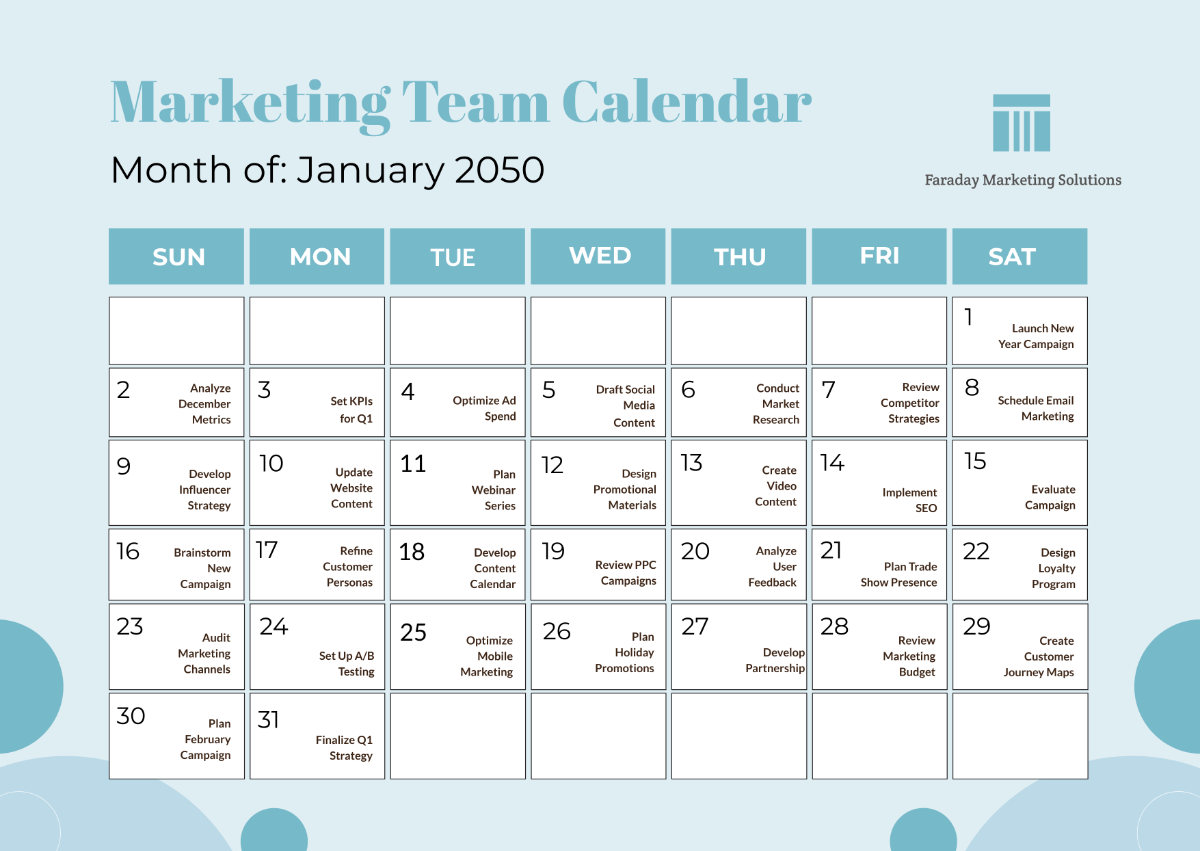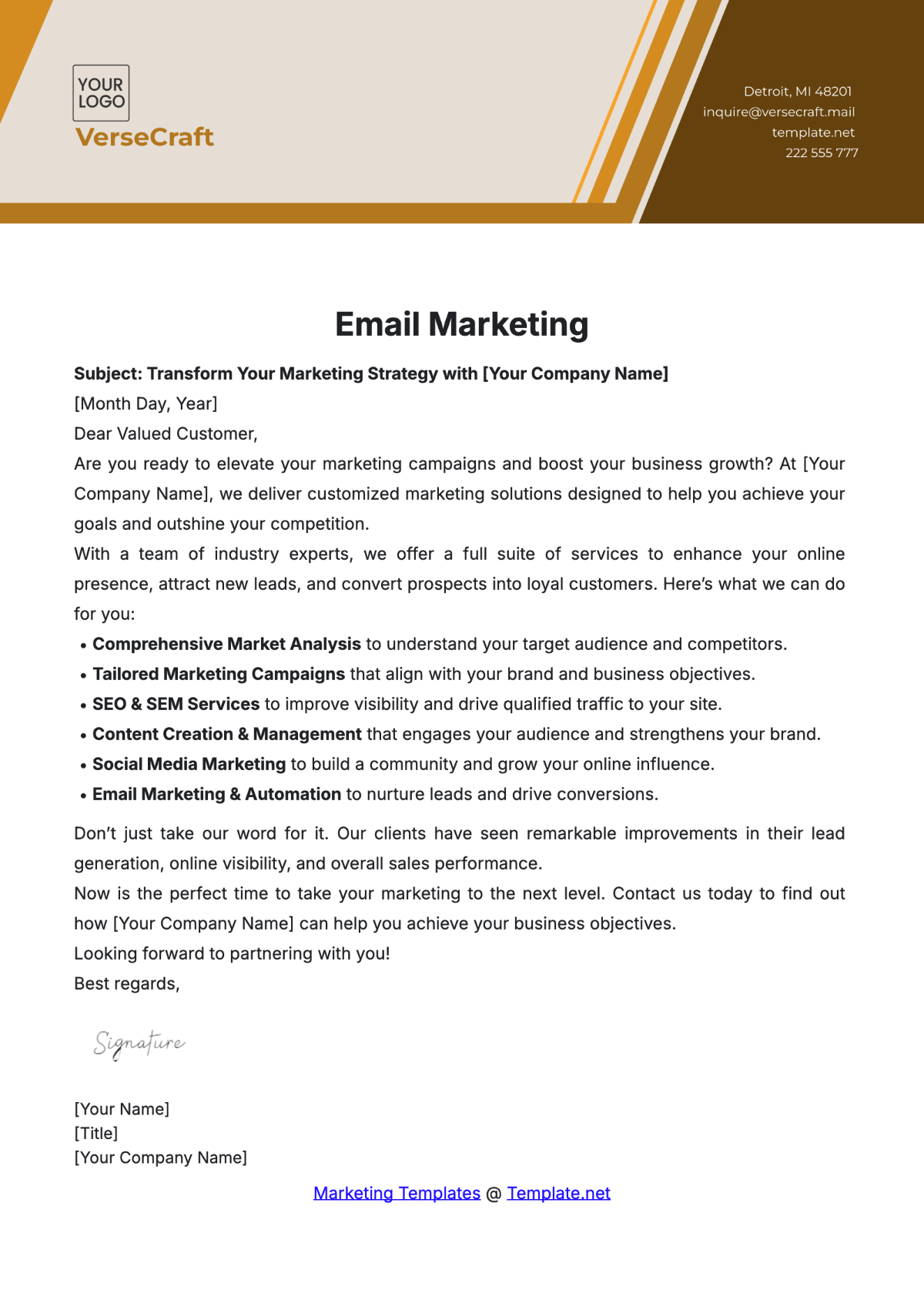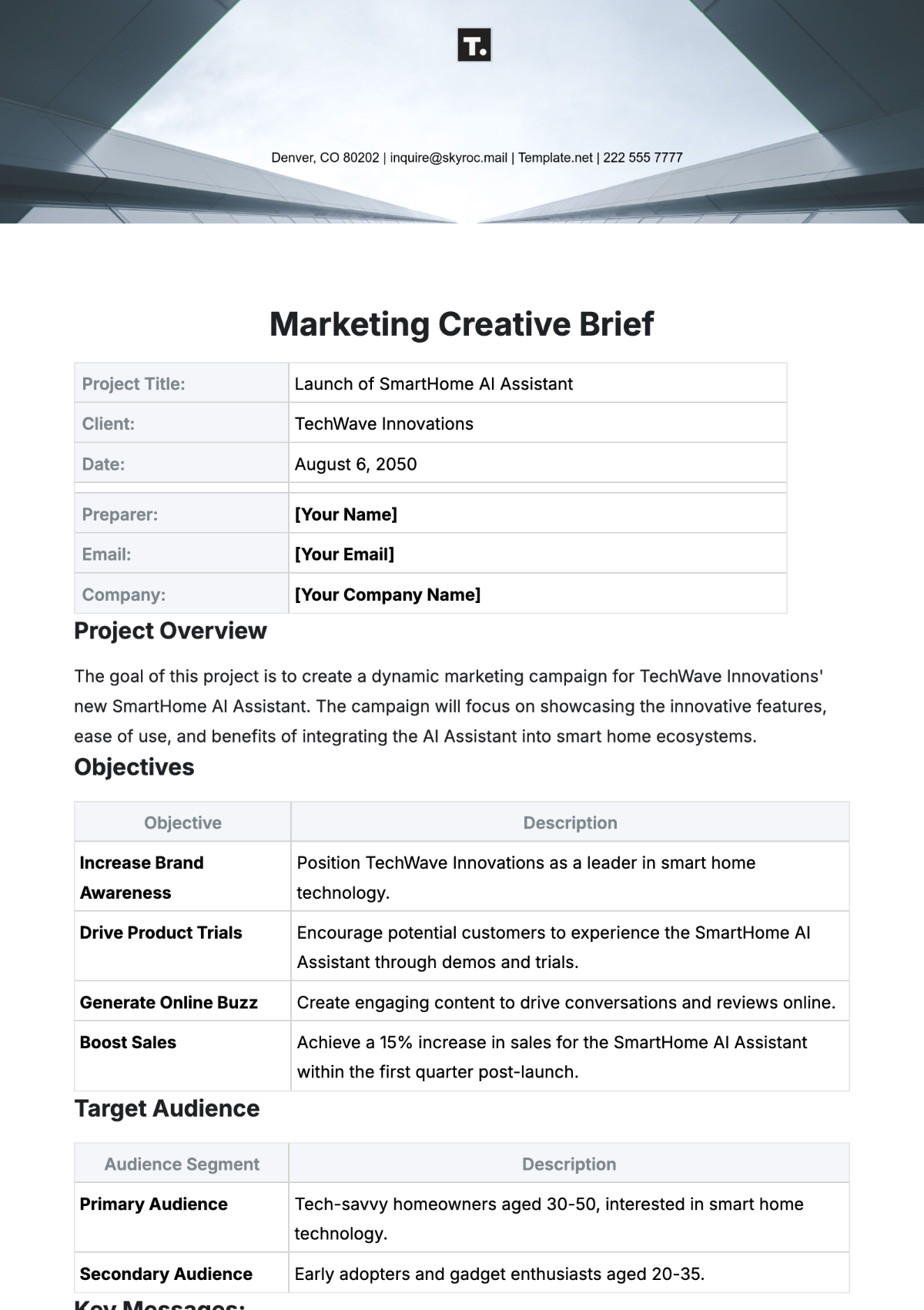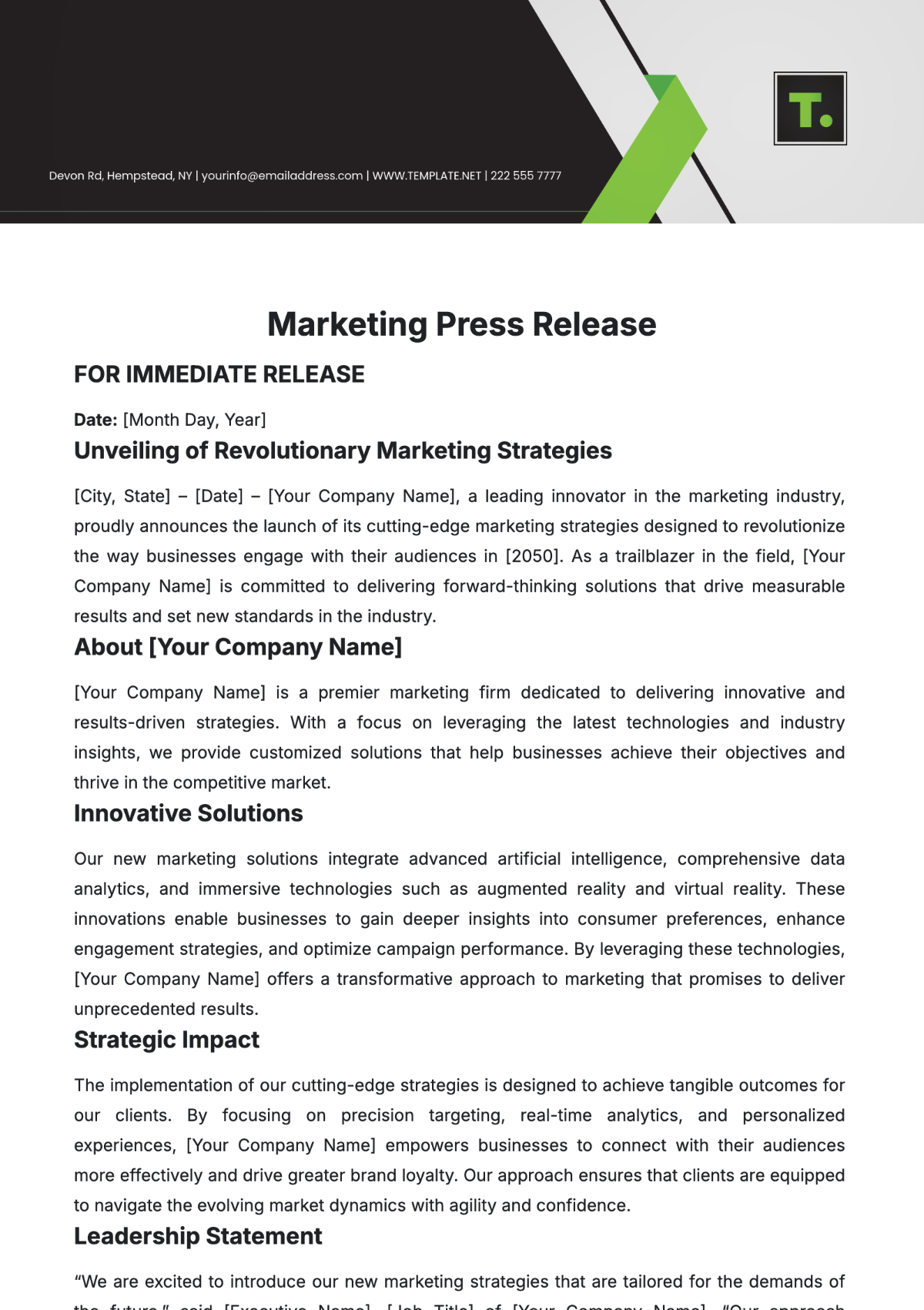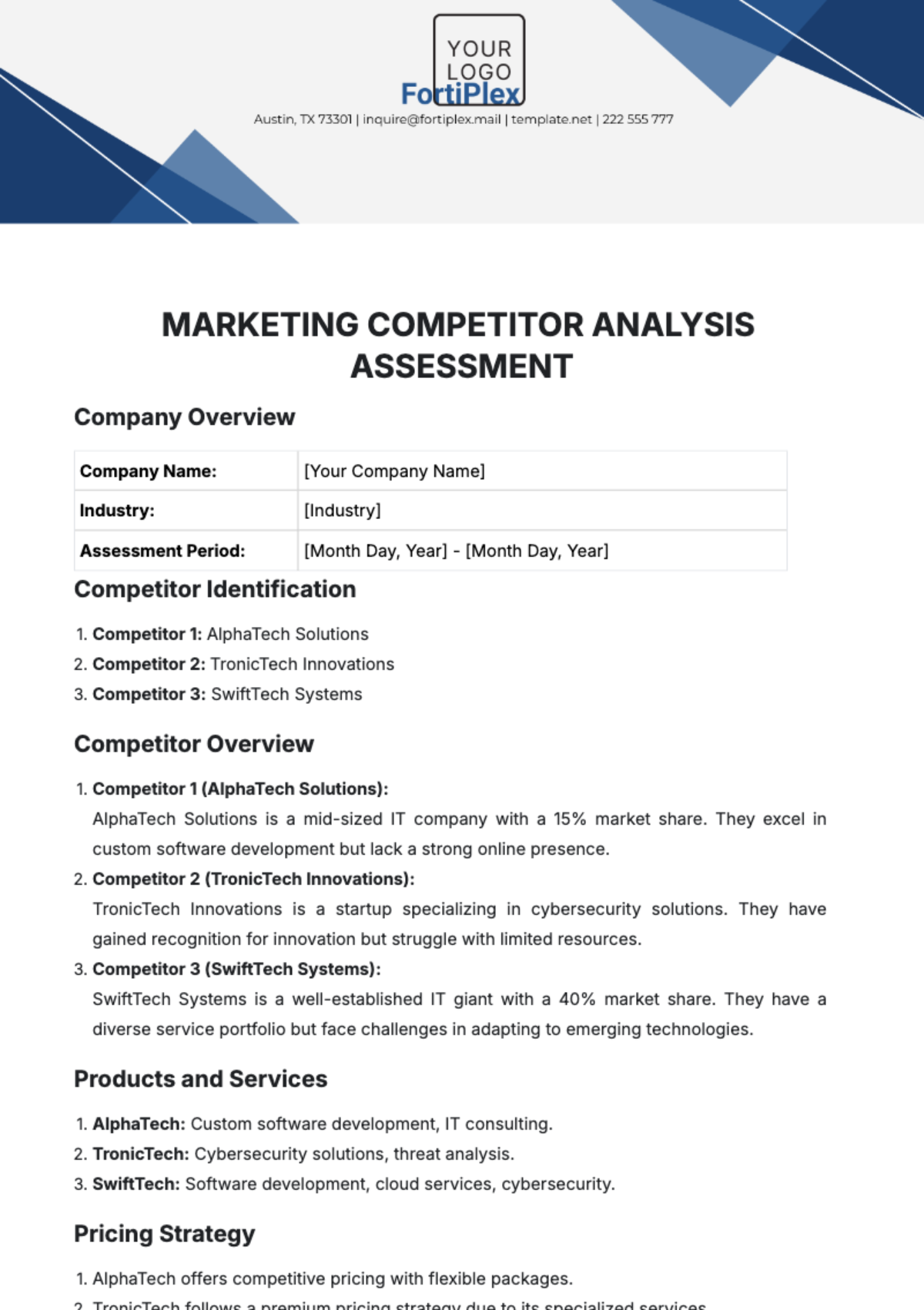Marketing Protocol
Prepared by: [Your Name]
1. Introduction
This marketing protocol serves as a structured guide for planning, executing, and analyzing marketing activities within [Your Company Name]. Its purpose is to ensure consistency, maximize efficiency, and achieve desired results across various campaigns.
2. Market Research
Conduct thorough market research to understand the target audience, competitive landscape, and market trends. This section outlines the steps involved in conducting market research:
Identify Target Audience: Define the demographics, psychographics, and behavioral characteristics.
Analyze Competitors: Review competitors’ strengths, weaknesses, opportunities, and threats.
Gather Market Data: Utilize surveys, focus groups, and data analytics to gather relevant information.
3. Marketing Objectives
Establish clear and measurable marketing objectives aligned with the overall business goals. Common objectives include:
Increase Brand Awareness
Generate Leads
Boost Sales
Improve Customer Retention
4. Strategy Development
Develop a comprehensive marketing strategy that outlines the approach for achieving the objectives. The strategy should include the following elements:
Value Proposition: Define the unique benefits offered by the product or service.
Positioning: Determine how to position the brand in the market.
Marketing Mix: Identify the 4 P’s—Product, Price, Place, Promotion.
5. Campaign Planning
Detail the steps for planning and executing marketing campaigns. This includes creating a campaign brief, setting timelines, and assigning responsibilities.
Task | Responsible Person | Deadline |
|---|---|---|
Develop Creative Content | Creative Team | March 10, 2055 |
Set Up Advertising Platforms | Ad Manager | March 15, 2055 |
Launch Campaign | Campaign Manager | April 1, 2055 |
6. Performance Metrics
Identify and define key performance indicators (KPIs) to measure the effectiveness of marketing efforts. Common KPIs include:
Click-Through Rate (CTR)
Conversion Rate
Customer Acquisition Cost (CAC)
Return on Investment (ROI)
7. Evaluation and Reporting
Establish procedures for monitoring performance and reporting results. This includes regular reviews, data analysis, and presentations to key stakeholders.
8. Conclusion
In conclusion, the marketing protocol provides a detailed framework for carrying out marketing initiatives effectively. By following this structured approach, organizations can achieve greater consistency, efficiency, and success in their marketing endeavors.


